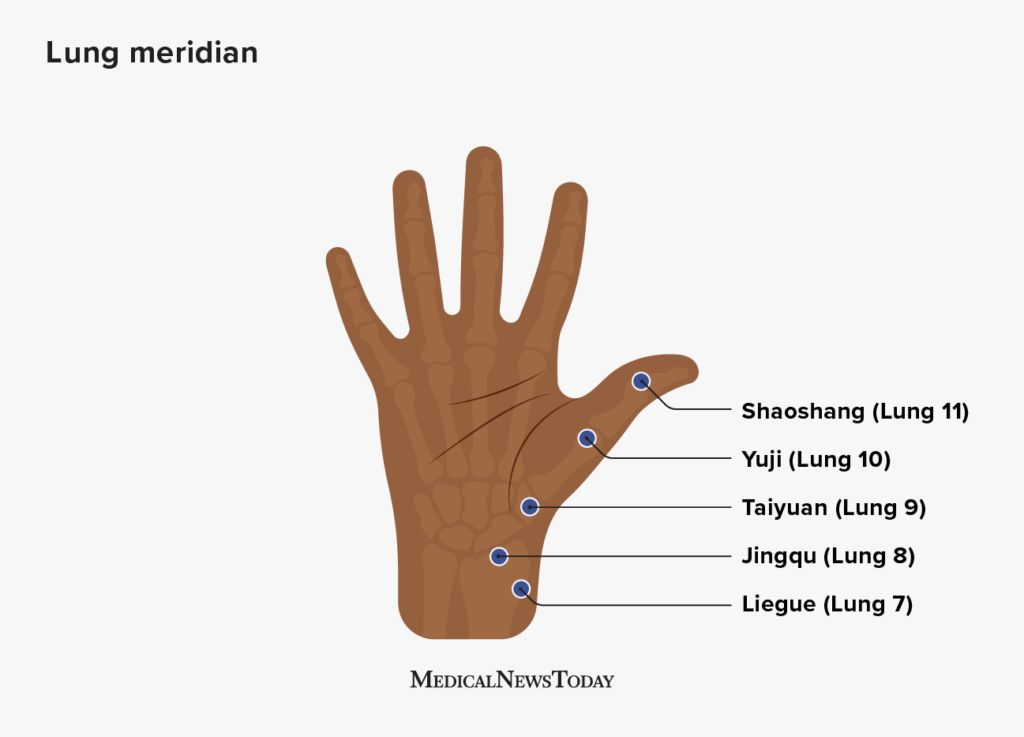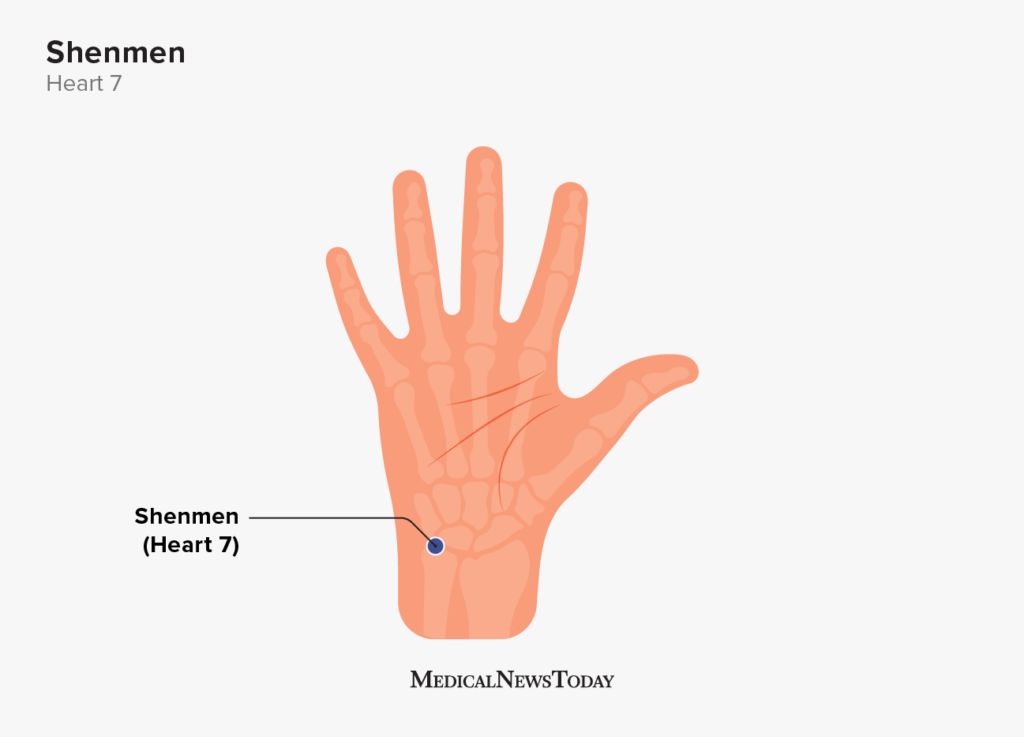There are many pressure points in the human body. Some people believe that pressing on these points, including hand pressure points, can affect other parts of the body and overall health.
Pressure points are areas of the body that reflect the acupressure points used in traditional Chinese medicine (TCM). Traditional practitioners identified specific spots that they believed improved energy flow through the body.
People still practice these therapies today. Practitioners of acupressure use pressure points in their healing treatments.
For people interested in acupressure, the hands have many pressure points. Keep reading for more information.

The lung meridian (LU) runs from the chest to the tip of the thumb, including the crease in the wrist. This pathway has 11 pressure points, 5 of which are located in the hand and wrist. These include the following:
- Lieque, alternatively known as Interrupted Sequence or Lung 7
- Jingqu, alternatively known as Channel Ditch or Lung 8
- Taiyuan, alternatively known as Great Deep Pool or Lung 9
- Yuji, alternatively known as Fish Border or Lung 10
- Shaoshang, alternatively known as Lesser Metal or Lung 11
Applying pressure to these pressure points in the hand is thought to maintain overall health and wellness, as well as the respiratory and immune systems.

Shenmen translates to Spirit Gate.
The heart meridian pathway runs from just below the shoulder to the tip of the little finger. It has nine pressure points, with the main point being the seventh. People may also refer to this pressure point as Heart 7.
Applying pressure to this pressure point is believed to help with:
- depression
- anxiety
- insomnia
- regulating blood pressure
- alleviating headaches
- relieving pain in the arm and wrist
- improving circulation
- improving energy levels
Nei Guan translates to Inner Pass. People may also refer to this pressure point as Pericardium 6.
This pressure point is not directly on the hand. To find it, place the hand palm up and use three fingers to measure roughly an inch down the wrist. It is approximately located in the center of the wrist.
Practitioners recommend using the thumb of the other hand to firmly massage this pressure point to help with the digestive and immune systems. It may also help reduce nausea and vomiting caused by motion sickness, morning sickness, and chemotherapy treatment.
He Gu translates to Union Valley. People may also refer to this pressure point as Large Intestine 4.
A person can find the He Gu pressure point in between the first finger and the thumb.
Practitioners claim that applying firm pressure to the hand valley point can relieve stress and tension in the body.
Weiguan translates to Outer Pass. People may also refer to this pressure point as San Jiao or Triple Warmer 5.
The Weiguan pressure point is almost parallel to the Nei Guan pressure point on the top side of the hand and arm, between two tendons.
Applying pressure to this area is thought to help with headaches and migraine.
Houxi, which translates to Back Rivine, is on the side of the hand just below the little finger and above one of the hand’s large creases. People may also refer to this pressure point as Small Intestine 3.
Applying firm pressure to this point may help relieve earaches, headaches in the back of the head, neck pain, and upper back pain.
The tips of each finger are home to these 10 pressure points.
Applying pressure or using acupuncture on these points could help relieve some common flu symptoms, such as a high fever or a sore throat.
A person can find the four seams on the inside of each of the large joints in the index finger, middle finger, ring finger, and little finger.
Proponents of acupressure believe that these points can help treat digestive problems, especially in children.
Although clinical study results are mixed, applying pressure to certain points in the body may help reduce pain. For example, the Memorial Sloan Cancer Center recommends acupressure to help relieve pain related to cancer.
Acupressure may also help to reduce symptoms of mental health conditions, such as anxiety and depression.
A
Additionally, a
Although the research is limited, acupressure appears to be safe. A person can incorporate acupressure alongside their doctor-recommended medical treatments.
Acupressure and reflexology are
- they are pregnant
- there is a wound or rash near the pressure point
- the skin near the pressure point is damaged
- there is swelling, warmth, pus, or skin color changes near the pressure point
It is important to note that people who have previously had blood clots or have risk factors for blood clots should speak with a doctor before receiving acupressure or massage.
There are many pressure points in the hands, many of which are part of a much larger chain of points that run up and down the arms. Proponents of acupressure and reflexology believe these points can help heal other parts of the body.
People can practice acupressure on themselves or use the services of a licensed practitioner who has studied pressure points and understands how they work.
It is important to note that little research supports the use of pressure points to treat illnesses. However, people can safely use hand pressure points in addition to regular medical treatments.
